Il1rn
-
Official Full Name
interleukin 1 receptor antagonist -
Overview
The interleukin-1 receptor antagonist (IL-1RA) is a protein that in humans is encoded by the IL1RN gene. IL-1RA was initially called the IL-1 inhibitor and was discovered separately in 1984 by two independent laboratories. IL-1RA, is an agent that binds non-productively to the cell surface interleukin-1 receptor (IL-1R). IL-1R is the same receptor that binds interleukin 1 (IL-1). Hence IL-1RA prevents IL-1 from sending a signal to that cell. -
Synonyms
IL1RN;interleukin 1 receptor antagonist;interleukin-1 receptor antagonist protein;ICIL 1RA;IL 1RN;IL1F3;IL1RA;interleukin 1 receptor antagonist protein;intracellular interleukin 1 receptor antagonist;IRAP;MGC10430;IL1 inhibitor;IL1RN (IL1F3);type II interleukin-1 receptor antagonist;intracellular IL-1 receptor antagonist type II;intracellular interleukin-1 receptor antagonist (icIL-1ra);DIRA;MVCD4;IL-1RN;IL-1ra;IL-1ra3;ICIL-1RA
Recombinant Proteins
- Human
- Rabbit
- Equine
- Mouse
- Cattle
- Dog
- Horse
- Pig
- Rhesus macaque
- Rat
- Chicken
- Cynomolgus
- Rhesus monkey
- Cat
- E.coli
- HEK293
- Yeast
- Mammalian Cells
- Human Cells
- Mouse
- Bacillus subtilis
- Non
- Fc
- His
- Avi
- DDK
- Myc
- Flag
Background
What is IL1RN protein?
IL1RN gene (interleukin 1 receptor antagonist) is a protein coding gene which situated on the long arm of chromosome 2 at locus 2q14. The protein encoded by this gene is a member of the interleukin 1 cytokine family. This protein inhibits the activities of interleukin 1, alpha (IL1A) and interleukin 1, beta (IL1B), and modulates a variety of interleukin 1 related immune and inflammatory responses, particularly in the acute phase of infection and inflammation. The IL1RN protein is consisted of 177 amino acids and IL1RN molecular weight is approximately 20.1 kDa.
What is the function of IL1RN protein?
IL1RN or IL-1Ra, plays a vital role in modulating inflammatory responses. IL-1Ra acts as a natural inhibitor of the pro-inflammatory cytokine IL-1, which is crucial in the immune response to infections and injury. By binding to the IL-1 receptor without triggering a signal, IL-1Ra curbs the inflammatory actions of IL-1, thereby maintaining a balance in the immune system. This protein is also being studied for its potential involvement in the development of certain cancers and its use as a biomarker for diseases such as diabetes.
IL1RN related signaling pathway
IL1RN is a key regulator in the immune system's response to inflammation and is implicated in various signaling pathways. It acts as a natural inhibitor of the pro-inflammatory cytokine IL-1 by blocking its receptor, thus modulating inflammation. IL-1Ra plays a role in the pathogenesis of several diseases, including diabetes and various cancers, and has been studied for its potential as a therapeutic target. The protein's function in regulating the inflammatory response makes it a significant factor in maintaining immune homeostasis and could influence the progression and treatment of diseases where inflammation plays a critical role.
IL1RN related diseases
The IL1RN protein, which encodes the interleukin-1 receptor antagonist (IL-1Ra), is integral to regulating inflammatory responses. It's associated with a spectrum of diseases, particularly those with an inflammatory or autoimmune component. IL-1Ra plays a critical role in autoimmune diseases like rheumatoid arthritis and systemic juvenile idiopathic arthritis, where it helps to mitigate disease severity when used as a therapeutic agent. It's also implicated in neurodegenerative diseases, potentially influencing processes like Multiple Sclerosis. Furthermore, IL-1Ra has been investigated for its potential involvement in diabetes, with studies suggesting it could be a therapeutic target for type 2 diabetes mellitus. Its role in inflammation makes it a significant player in conditions like gouty arthritis and atherosclerosis, where it can influence disease progression.
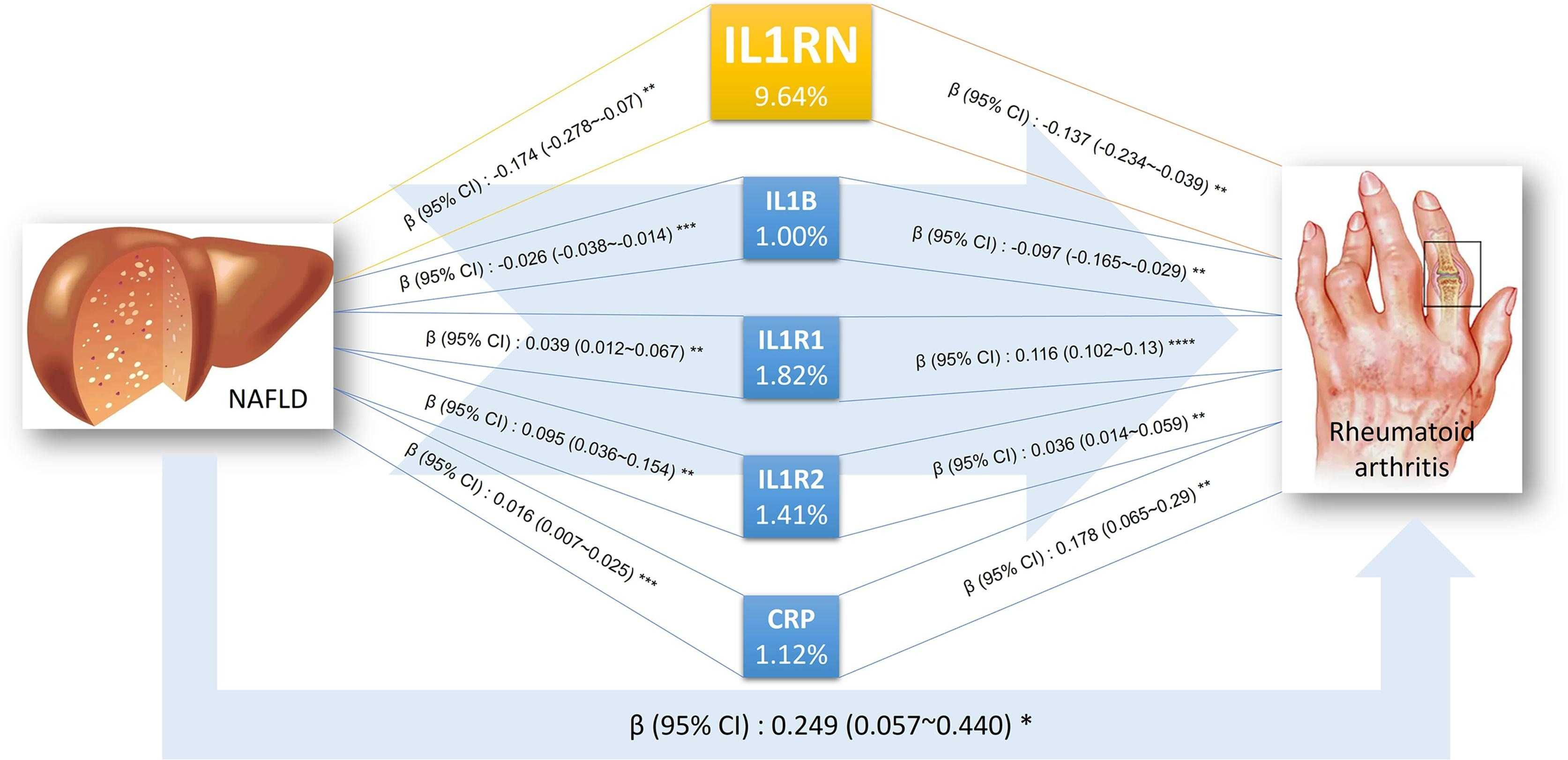
Fig1. Schematic diagram of mediation effect. (Jinghua Gu, 2024)
Bioapplications of IL1RN
IL1RN is a protein that plays a crucial role in downregulating the immune response. It acts as a natural inhibitor of the pro-inflammatory cytokine IL-1, helping to maintain balance within the immune system. This protein is associated with a variety of diseases, particularly those with an inflammatory component. Elevated levels of IL1RN have been found in conditions like rheumatoid arthritis and gout, and it's being investigated as a potential therapeutic target for these and other diseases, including certain cancers.
Case Study
Case Study 1: Ivan Achel Valdez, 2016
A key objective in diabetes research is to regenerate insulin-producing beta cells in the pancreas. Researchers explored how pancreatic cells can transform into different types, a process seen during stress and injury. This study looked at the impact of inflammatory cytokines on ductal cells in human cell lines, mice, and the NOD mouse model of autoimmune diabetes. They discovered that these cytokines trigger changes that promote the development of endocrine cells in pancreatic ductal cells through a STAT3-NGN3 pathway. Moreover, they demonstrated that this reprogramming can occur in vivo without the need for hyperglycemic stress. The results suggest that inflammatory cytokines can guide the differentiation of ductal cells into endocrine cells, offering insights into potential beta cell regeneration strategies.
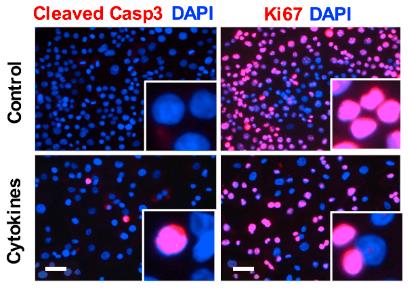
Fig1. Representative immunofluorescence images of untreated or cytokine-treated cells for Ki67 and cleaved caspase-3 staining.
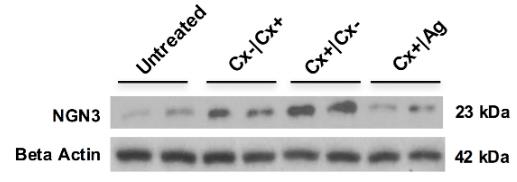
Fig2. NGN3 upregulation in human ductal cells upon inflammatory cytokine stimulation.
Case Study 2: Yu-Ching Fan, 2020
Researchers discovered that IL1RN, an anti-inflammatory cytokine, is present in the tumor microenvironment of a mouse prostate cancer model. To understand its role, they studied IL1RN-producing cells in two mouse tumor models and analyzed their impact on tumor-infiltrating leukocytes (TILs). Here CD11b-deficient TILs secreted IL1RN and boosted proliferation, as shown by conditioned media analysis. IL1RN's proliferative effect was also seen in human prostate cancer cell lines. Specifically, the LNCaP cell line was sensitive to IL1β and had androgen-regulated IL1R1, which IL1RN could counteract.
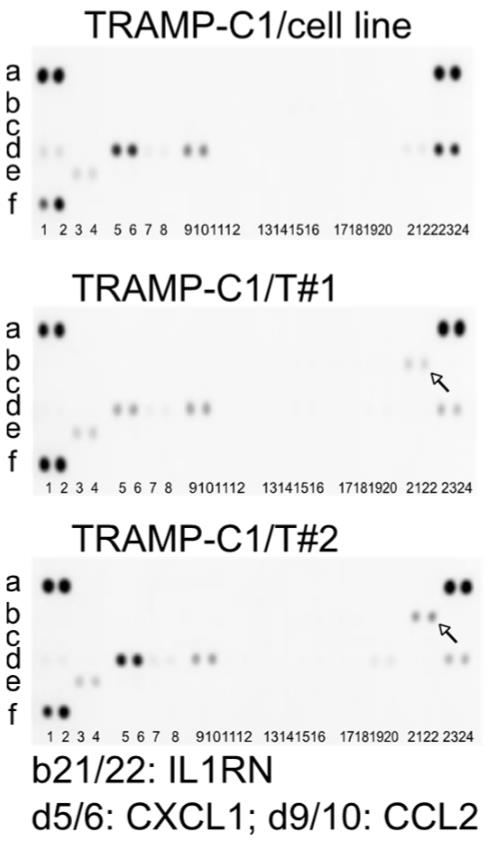
Fig3. Comparison of the cytokine/chemokine profiles of the TRAMP-C1 cell line and its derived tumors.
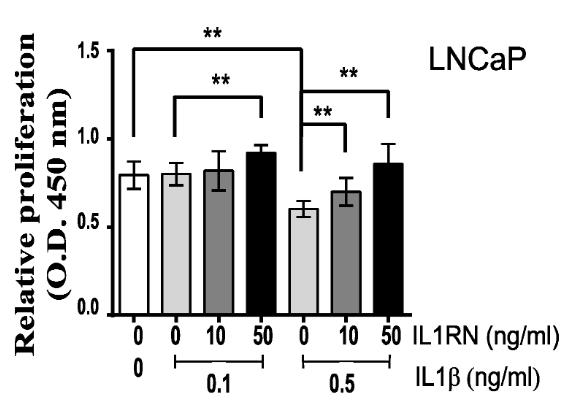
Fig4. Proliferation assay using the LNCaP cell line in combination of the IL1RN and IL1β.
Quality Guarantee
High Purity
.jpg)
Fig1. SDS-PAGE (IL1RN-05H)
.
.jpg)
Fig2. SDS-PAGE (IL1RN-495H)
Involved Pathway
Il1rn involved in several pathways and played different roles in them. We selected most pathways Il1rn participated on our site, such as Cytokine Signaling in Immune system,IL-1 Signaling Pathway,IL1-mediated signaling events, which may be useful for your reference. Also, other proteins which involved in the same pathway with Il1rn were listed below. Creative BioMart supplied nearly all the proteins listed, you can search them on our site.
| Pathway Name | Pathway Related Protein |
|---|---|
| Leptin signaling pathway | KHDRBS1,CFL2 |
| SIDS Susceptibility Pathways | MBD1,PKNOX1,KCNJ8,DLX2,TPPP,ECE1,CTCF,TSPYL1,PLP1,TAC1 |
| Cytokine Signaling in Immune system | DUSP5,NUPL2,CSH1,PEA15,IRF4,FGFR1B,TNFSF13B,JAK1,DUSP2,CSF2RB |
| Interleukin-1 signaling | PELI3,NOD1,TNIP2,PELI2,PELI1,IRAK3 |
| IL-1 Signaling Pathway | SIRPA,IKBKAP |
| Signaling by Interleukins | SOCS3A,CASPB,LGALS9,CASPBL,HAVCR2 |
| Immune System | HCST,VPRBP,FBXO3,ARIH1,TNRC5,POLR3H,TLR6,CASPBL,RNF220,DYNC1I1 |
| IL1-mediated signaling events | IRAK3,TMED7-TICAM2,TMEM189-UBE2V1 |
Protein Function
Il1rn has several biochemical functions, for example, cytokine activity,interleukin-1 Type I receptor antagonist activity,interleukin-1 Type II receptor antagonist activity. Some of the functions are cooperated with other proteins, some of the functions could acted by Il1rn itself. We selected most functions Il1rn had, and list some proteins which have the same functions with Il1rn. You can find most of the proteins on our site.
| Function | Related Protein |
|---|---|
| interleukin-1, Type II receptor binding | ERAP1 |
| interleukin-1 receptor antagonist activity | IL36RN,Il1f5 |
| protein binding | SSTR3,APITD1,CAMSAP1L1,CORO1B,CLEC1B,C7orf53,SPRR1A,FRAG1,KRTAP9-2,SENP3 |
| interleukin-1 receptor binding | IL36G,IRAK4,IL36RN,TRIP6,TLR9,IL1B,IL36B,IL37,TLR5,IL36A |
| cytokine activity | IFNA7,IFNB1,Ifnl2,IL24,Ccl27a,GDF2,NDR2,SPAW,CMTM8,Il1f9 |
| interleukin-1, Type I receptor binding | TOLLIP |
Interacting Protein
Il1rn has direct interactions with proteins and molecules. Those interactions were detected by several methods such as yeast two hybrid, co-IP, pull-down and so on. We selected proteins and molecules interacted with Il1rn here. Most of them are supplied by our site. Hope this information will be useful for your research of Il1rn.
TERF2IP;IL1R1;POT1
Resources
Gene Families
Related Services
Related Products
References
- Levin, EC; Debbaneh, M; et al. Biologic Therapy in Erythrodermic and Pustular Psoriasis. JOURNAL OF DRUGS IN DERMATOLOGY 13:342-354(2014).
- Zaaber, I; Mestiri, S; et al. Polymorphisms in TSHR and IL1RN genes and the risk and prognosis of Hashimoto's thyroiditis. AUTOIMMUNITY 47:113-118(2014).




